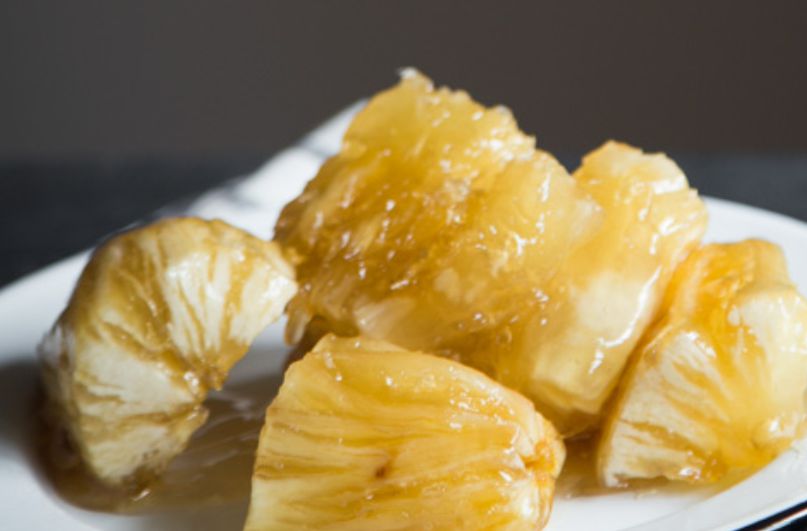Cassava root in Southeast Asian cooking is indispensable. Praised for its availability, it is used in savory dishes, desserts, and snacks and plays a role in regional cuisines and cultural traditions.
From savory dishes to desserts, cassava plays an integral role in the region’s culinary culture.
Whether the cassava root is boiled, fried, roasted, or grated, it serves as a key component in traditional recipes across countries like Indonesia, Thailand, the Philippines, and Vietnam.
Known for its rich carbohydrate content, cassava provides nourishment but and connects communities to their cultural heritage.
This article discusses the vast ways cassava root is used in Southeast Asian cooking and its cultural importance.
Recommended: Cassava Root in the Caribbean Cuisine
Cassava in Southeast Asian Cuisine
Cassava and its food derivatives play a chief role in Southeast Asian culinary traditions.
Found in countries like Indonesia, Thailand, the Philippines, and Vietnam, cassava is enjoyed in many forms like cassava flour, chips, and desserts, and is a basic food for many communities across the region due to its abundance and nutritional value.
Cassava in Indonesia: A Comforting Side Dish
In Indonesia, cassava is often steamed or boiled to create a chewy texture that pairs perfectly with savory sauces.
A beloved dish called “Ubi Kayu” treats the root with coconut milk, making it a popular side during special occasions.
In rural areas, cassava serves as an essential food source, particularly when rice is scarce, highlighting its importance as a reliable food.
Related: Cassava Cake Recipes
Thailand: A Sweet and Savory Delight
In Thailand, cassava is featured in both sweet and savory dishes. One favorite dessert is “Kanom Kluay,” a banana and cassava pudding that highlights the vegetable’s starchy sweetness.
Thai cooks also use cassava in curries and stir-fries, adding texture and depth to the dish.
The resourcefulness of cassava in Thai cuisine shows its importance as an energy source and an ingredient that improves flavor and texture.
Philippines: A Dessert to Celebrate
The Philippines is no stranger to cassava, using it in comforting desserts like Cassava Cake.
This rich and moist cake is made from grated cassava, coconut milk, and sugar, and is often served during festivals.
Its unique texture and flavor make it a celebrated dish that brings families together during celebrations and special gatherings.
Vietnam: Savory Street Food
In Vietnam, cassava takes on a savory role in dishes like Banh Khoc, where small cassava cakes are filled with savory ingredients, creating a popular street food enjoyed by locals.
Cassava Pudding: Creamy and Irresistible
Cassava pudding is another popular dish found in Indonesia and Thailand.
This creamy dessert shares many ingredients with the cassava cake but is known for its smooth, velvety consistency.
It’s a sweet, indulgent treat that is both satisfying and comforting.
Cassava Chips: A Crunchy Delight
When it comes to snacks, cassava chips are a favorite. Thinly sliced cassava is fried or baked until golden and crispy, creating a light, crunchy treat that pairs wonderfully with dips.
These chips are perfect for satisfying that midday snack craving or as a side dish to your meal.
Tapioca Pearls: A Sweet Bubble Tea Essential
Perhaps one of the most famous uses of cassava is in the production of chewy tapioca pearls, which are a key ingredient in bubble tea.
These chewy, small balls are made by extracting starch from cassava and shaping it into pearls.
Tapioca pearls have become a beloved component of both drinks and desserts, further showcasing the importance of cassava in Southeast Asian cuisine.
Related: Cassava Recipes for Weight Loss
Cultural Significance of Cassava in Southeast Asia
Cassava is much more than a nutritional food source in Southeast Asia.
It holds a deep cultural position across various countries in the region, integrating into local traditions, celebrations, and daily life.
Its pliability has made it a key ingredient in a wide variety of dishes, particularly those enjoyed during family gatherings and community events.
A Symbol of Unity and Tradition
During festivals and special occasions, cassava-based dishes are more than just food, they represent cultural identity and social connection.
These dishes, often sweet treats or savory snacks, are commonly prepared for religious ceremonies, national holidays, and family celebrations.
The act of sharing meals made with cassava fosters a sense of unity, gratitude, and belonging, strengthening the bonds within families and communities.
Recommended: Different Ways to Cook Cassava Root
Cassava at the Heart of Local Markets
Local markets in Southeast Asia are vibrant hubs where cassava plays an important role.
Vendors display fresh cassava alongside an assortment of cassava-based products.
The sight of cassava in these markets highlights its value as an agricultural product and as a symbol of the region’s cultural heritage.
For many, purchasing and consuming cassava-based foods is a celebration of local traditions and identity, contributing to an economy deeply rooted in tradition.
Cassava: A Lifeline in Rural Communities
In rural areas, cassava is considered a reliable and resilient source of sustenance.
It’s a vital crop that thrives in various climates and serves as a food security measure for communities facing food shortages.
Beyond its role as a staple food, cassava is seen as a symbol of hope, offering a sense of stability and nourishment in times of need.
More Than Just Food
Cassava is more than just a root vegetable in Southeast Asia; it represents sustenance, resilience, and cultural pride.
Its role in festivals, markets, and rural communities underscores its importance as a food staple and a cultural emblem, helping to weave a deeper sense of unity and continuity throughout the region.
Conclusion
Cassava plays a central role in the culinary and cultural landscape of Southeast Asia.
From savory dishes to sweet desserts, its availability makes it an indispensable crop across Indonesia, Thailand, the Philippines, and Vietnam.
Beyond its nutritional value, cassava is a symbol of unity, tradition, and resilience, deeply integrated into family gatherings, festivals, and local markets.
Whether as a comforting side dish, a celebratory dessert, or a vital food source, cassava continues to nourish and connect communities.
References:
- https://whattocooktoday.com/candied-cassava-coconut-milk.html
- https://www.asianscientist.com/2023/10/sponsored-feature/getting-to-the-root-of-southeast-asias-cassava-concerns/
- https://www.aciar.gov.au/sites/default/files/2020-08/ACIAR-PR148-Cassava.pdf

Chimeremeze Emeh is a writer and researcher passionate about Africa’s most transformative root crop—cassava. Through his work at cassavavaluechain.com, he explores the entire cassava industry, from cultivation and processing to its diverse applications in food, health, and industrial use.
He also writes for palmoilpalm.com, where he shares his extensive experience and deep-rooted knowledge of palm oil, covering red palm oil, palm kernel oil, and refined products. His work there reflects his lifelong connection to agriculture and his commitment to promoting sustainable value chains in Africa.
Driven by curiosity and purpose, Chimeremeze aims to shed light on how cassava continues to empower communities, strengthen food systems, and link traditional farming wisdom with modern innovation.

